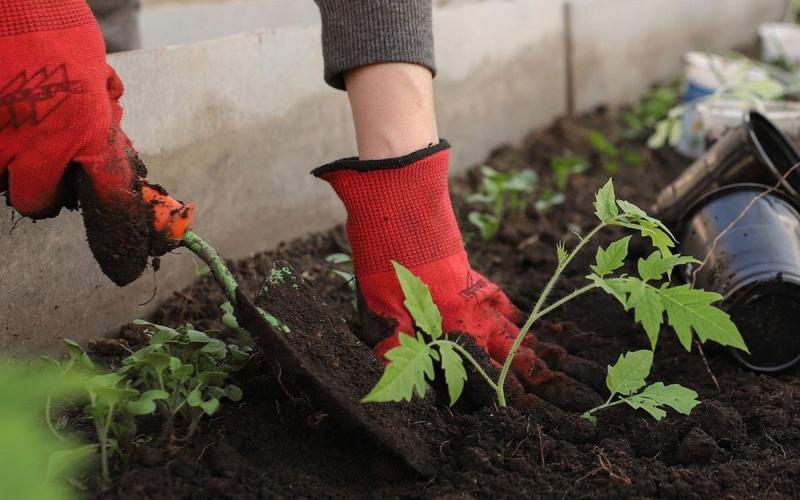Written by Connor Ruen, SDSU M.S. Graduate Student and Research Assistant, under the direction and review of Abigail Martens and Kristine Lang.
Introduction
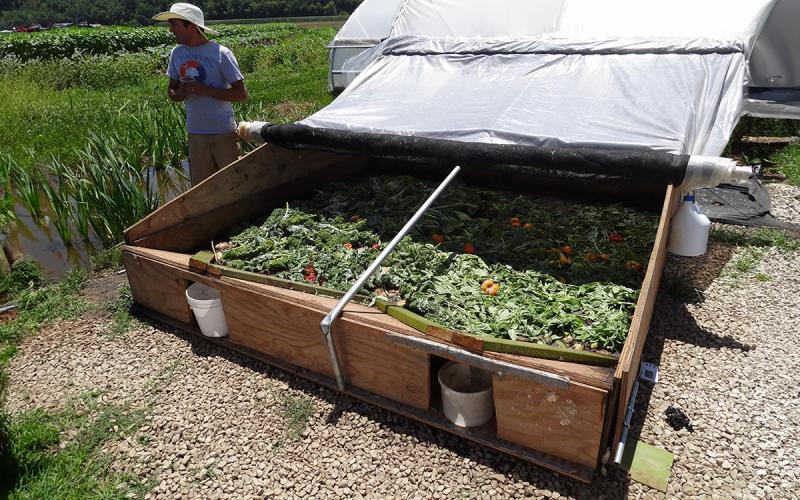
Bioconversion is the use of a living organism to break down organic matter into a different form. In the case of black soldier flies (also abbreviated as BSF), they can take organic matter in most forms and break it down through digestion.
Much like composting, the use of black soldier flies allows for organic matter to be quickly turned into nutrient-rich food, which can be used in your garden. Black soldier fly pupae are also a high-protein food that can be used for animal food rations. Bioconversion through black soldier flies can also keep food waste out of the landfill and keep nutrients in your garden.
Rearing is the process of growing an insect through part of its life cycle. To begin constructing a container for rearing black soldier flies, see the step-by-step guide below.
Constructing a Black Soldier Fly Rearing Container
Materials Needed
- One (1) 18-gallon tote
- Two (2) 1 x 1 inch diameter 90 degree PVC elbows
- One (1) 1-inch x 5 foot PVC pipe
- One (1) 1-inch tee PVC fitting
- Waterproof caulk
- Black soldier fly larva
- Small bucket
Tools Required
- 1-inch circular drill bit
- Drill
- PVC cutter
- Hand saw
- Gloves
- Marker
- Measuring tape
Assembly Steps
- The first step to making your rearing container is to cut two 2-inch sections off of the 5-foot section of PVC pip.
- Next, fit the two 2-inch sections of PVC between the elbow and tee fittings. Upon completion, the finished piece should resemble the pipe in Figure 1.
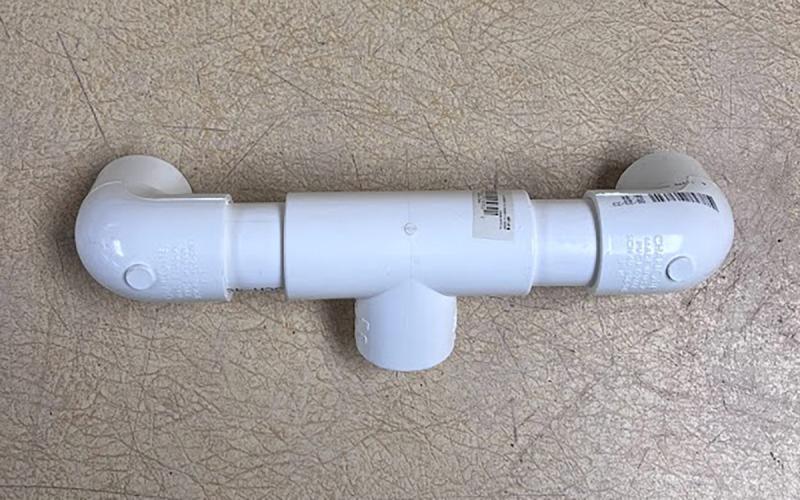
- Take the length of your container at the base and multiply the length by 0.7. This will mark how high up the wall of your container you will cut the hole for the PVC ramps.
- For example, the tote used in this guide (shown in Figure 3 at the end of these steps) was 36 inches, so 36 inches × 0.7 = ~2 feet, up the side wall, which is where we cut the hole.
- Use the elbow fitting as a guide to mark where to cut the hole with the 1-inch circle drill.
- Insert the remaining 5-foot section into the hole and mark it 1 inch from the outside of the hole, or measure the base diagonally for easy storage of PVC in the container. This will allow you to connect to the elbows outside of the hole. Repeat these steps for the second hole.
- Cut the long sections of PVC pipe using a hand saw to remove 8-to-10-inch sections with 1-inch sections for support (Figure 2). A file can be used to smooth rough spots from cutting.
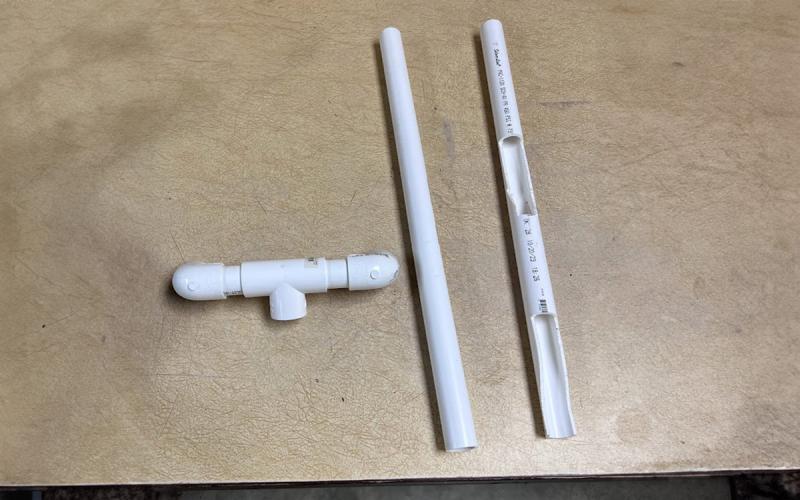
- All PVC can now be assembled and placed through the hole. Gluing PVC together is an option, but it is not required, and storage can sometimes be easier if all the pieces remain unglued.
- Waterproof caulking should be put around the hole where the PVC pipe enters the container.
- Once the caulk dries, your container is complete, and it should resemble the sample container in Figure 3 at the end of these steps.
- With construction complete, you can now add food scraps, yard waste, and organic matterial can to the container.
- Black soldier fly larve can now be added to your container, and they will be begin to self harvest by climbing the ramp in 2 to 4 weeks.
- Place a bucket with potting soil under the tee fitting to catch the larve as they look for somewhere outside of their food source to pupate. A bucket with a hole cut in the lid can be used since black soldier flies are very good climbers and can escape the bucket.
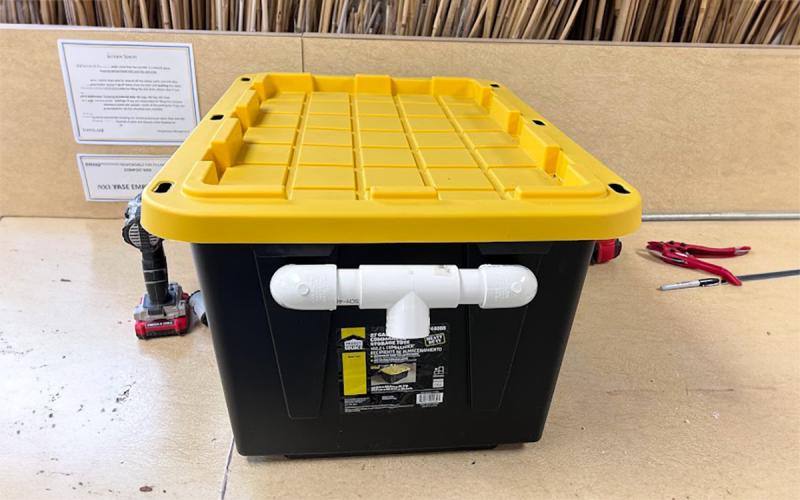
Note: Black soldier flies are not hardy in cold climates, so new larva will need to be purchased to continue growing more. In warmer climates, black soldier flies can be found naturally and can complete the full life cycle without the need for purchasing.
Conclusion and Recommendations
Using a rearing bin to grow black soldier flies is a fun way to quickly break down food scrapes or other organic material that would otherwise be thrown away. Black soldier fly pupae are also a great addition to feed for chickens and can be eaten by most animals for added protein. It would be recommended to add a ball-valve drain at the base of the tote to allow for the draining of any liquids that build up as the black soldier flies breakdown the organic material in the rearing bin. This liquid is high in nutrients, which can be diluted and used to fertilize plants as you water. Add potting soil to bucket to catch the larva. As the black soldier flies start to pupate, they look for soil to burrow into, and they will climb out of the bucket and find a better place to pupate.
References and Resources
- Sheppard, D., et al. 2003. A Value-Added Manure Management System Using the Black Soldier Fly. Bioresource Technology.
- Terrell, C. and L. Ingwell. Black Soldier Fly Composting Guide. Purdue University Extension Entomology.

